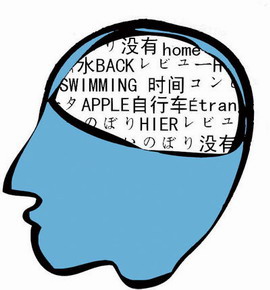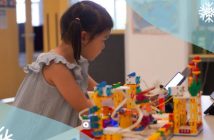 The art and science of raising bilingual kids
The art and science of raising bilingual kids
Like many bilingual parents, Chinese-American Amy Lee hopes her children will grow up speaking a second language. After giving birth to her daughter Hannah in the US, Lee was careful to speak only Mandarin to Hannah. It worked, at least for a couple years. Hannah took to the language and was chattering about ma before she could point out a horse. But when Lee’s maternity leave ended, the 2-year-old started going to daycare, where English was the only language spoken. Soon, English became the toddler’s dominant language.
“Once Hannah began to speak mostly English, it seemed weird to speak Chinese again,” says Lee, who now lives with her family near Chaoyang Park. As Hannah and Lydia, Lee’s younger daughter, grew older, they had language tutors and went to Chinese school on the weekends; slowly, though, learning Mandarin became a chore.
Expats in Beijing know how hard it is to master – or even gain a foothold in – Putonghua. So how can parents help their kids pick up the new language, especially if neither mom nor dad is a native speaker? Or, what if children end up preferring Chinese to their mother tongue?
Soak It Up
It’s hard to overstate how easily young kids absorb languages; up to the age of three or four, language acquisition takes place without conscious effort. “Once in school, children are asked to learn to read and write, and that process is quite different from acquiring a spoken language,” says Virginia Yip, a professor at the Chinese University of Hong Kong who studies children’s bilingual development, as does her husband Stephen Matthews, a professor at the University of Hong Kong.
Parents sometimes worry that blitzing babies with two or three languages at once will be confusing, but the rewards far outweigh the potential risks. It’s true that bilingual babies may start talking at a later age; researchers haven’t figured out why, but believe the extra time helps babies figure out, for instance, that mom speaks French and dad speaks German.
Over time, however, bilingual tots pick up language more quickly than their monolingual peers. Mom’s language will tend to dominate for the first few years. For Yip and Matthews, this was all the more true because their kids were being raised mostly in a Cantonese environment. All three became bilingual by age 5, and the couple even needed to speak more English with the youngest child for balance, says Matthews.
One rule of thumb is that children generally need to be exposed to the foreign language before the age of ten to develop a native speaker’s accent. Older kids can still gain fluency and master grammatical structures relatively easily, but that ability declines in the teenage years.
Even more important than age in learning a language, however, is motivation – the kid’s and the parents’. Culture shock might create emotional barriers to bilingualism; researchers have observed that expats’ attitudes to the local society are correlated to their success in learning the language. Translation: If mom and dad make only a halfhearted effort to learn the language or don’t respect Chinese as an alternate language at home, then kids will likely adopt the same attitude.
Getting It Right
The formula for raising bilingual kids is remarkably simple: fun immersion.
If kids perceive a social benefit to speaking the second language, they will be much more inclined to learn it. This might mean joining a playgroup with children who speak only the foreign language. “Any child in a playground will attempt to engage with other kids,” says Andrew Scrimgeour, a bilingual education researcher at the University of South Australia. “It’s the extension of their social world into the world of the other language that’s the most valuable exposure.”
The same theory applies to older children, who can pursue their existing interests – sports, music, movies – but in Chinese. One difference with younger kids is that teens probably need help relating the foreign grammar structure to their native language. For example, English speakers might have questions about how words such as “a” and “the” fit into Chinese, and how to express the past tense in the new language.
What doesn’t work well, especially for younger children, is a formal environment that depends on rote learning and follows rigid grammar lessons. Rather than just teaching the language itself, the new language should be used to teach other subjects.
Some international schools employ the experiential approach to learning, but that’s not always the case. In addition, schools often don’t offer enough Chinese language exposure for students to develop fluency, so parents need to take an active role in their children’s language learning. When the Lees moved to China from the US, for instance, the family had a hard time finding an international school that emphasized Chinese.
“I found the attitude was ‘Spanish or Chinese’; there wasn’t a lot of acknowledgement that we’re in China,” says Lee. In the end, the family decided on Yew Chung International School, which mandates an hour of Chinese class each day and provides 30 percent of classroom instruction in Chinese.
Since arriving in Beijing last fall, Lee’s two girls have come a long way with their Putonghua. Six-year-old Lydia is comfortable chattering in Chinese at home, though she initially went through a phase of wanting to move back to the US. Now 8 years old, Hannah isn’t completely bilingual yet but loves to write and speak in Chinese at home. It helped that she made friends last year with a new student at school who spoke mostly Chinese.
When the family moves back to the US, Lee hopes to enroll the girls in a Chinese immersion school. “I think English will be their dominant language, but I hope that at the end of two years they’ll have a good enough foundation in Chinese,” says Lee. No matter what, Lee is happy with the progress her two girls have made in Mandarin. “They even correct me on my pronunciation,” she laughs.



